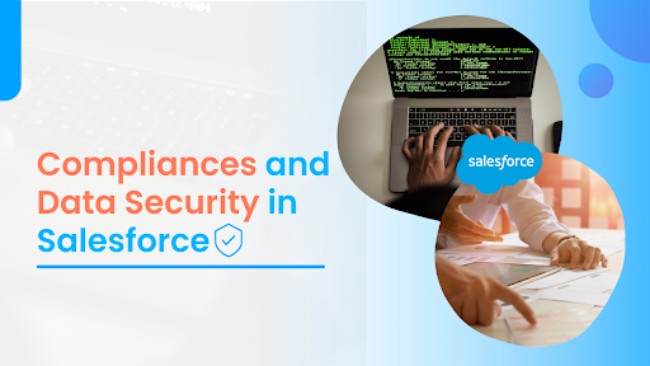
In today’s digital age, data security, and regulatory compliance have become paramount concerns for businesses across industries.
As companies increasingly rely on platforms like Salesforce to manage their customer relationships and data, implementing robust security measures and adhering to industry regulations is crucial.
In this article, we delve into the realm of security and compliance in Salesforce development, exploring strategies to protect sensitive information and ensure adherence to stringent regulatory standards.
Understanding the Security Landscape
Salesforce, as a cloud-based platform, provides a solid foundation for security, but it’s essential for developers to understand the shared responsibility model.
While Salesforce takes care of infrastructure security, developers are responsible for configuring and managing security within their applications. This dual approach ensures a layered defense that protects against potential vulnerabilities.
Role-Based Access Control (RBAC)
Role-based access control is a cornerstone of any secure Salesforce development services. By assigning different roles and permissions to users, developers can ensure that individuals have access only to the data and functionalities necessary for their roles. This principle limits the potential damage that can arise from unauthorized access.
Data Encryption and Tokenisation
Sensitive data, such as personally identifiable information (PII), must be encrypted both in transit and at rest. Salesforce offers robust encryption capabilities, including field-level encryption for sensitive data stored within the platform.
Additionally, tokenization can be utilized to replace sensitive data with tokens, adding an extra layer of security.
Multi-Factor Authentication (MFA)
Multi-factor authentication adds an extra layer of protection to user accounts. By requiring users to provide multiple forms of identification before gaining access, MFA significantly reduces the risk of unauthorized access, even if a password is compromised.
Compliance with Industry Regulations
Industries such as healthcare (HIPAA), finance (PCI DSS), and data protection (GDPR) are subject to stringent regulations that dictate how customer data must be handled.
Developers working with Salesforce must ensure that their applications comply with these regulations, which often require explicit consent, data retention policies, and auditing capabilities.
Audit Trails and Monitoring
Salesforce provides tools for logging and monitoring activities within the platform. By maintaining thorough audit trails, developers can track who accessed what data and when enabling them to identify and respond to potential security breaches promptly.
Secure Coding Practices
Secure coding practices are vital in preventing common vulnerabilities, such as SQL injection and cross-site scripting. Developers should adhere to best practices like input validation, output encoding, and parameterized queries to safeguard against these threats.
Continuous Security Testing
Regular security testing, including vulnerability scanning and penetration testing, is essential to identify and rectify potential weaknesses in your applications. These tests help ensure that your Salesforce solutions remain resilient against emerging threats.
Conclusion
As the technological landscape evolves, so do the challenges of maintaining robust security and compliance in Salesforce development.
By implementing a combination of security controls, adhering to regulatory requirements, and adopting secure coding practices, developers can create applications that not only drive business value but also safeguard sensitive data and maintain the trust of customers.
Remember that security is an ongoing process, and staying vigilant against evolving threats is essential for the long-term success of your Salesforce solutions.
